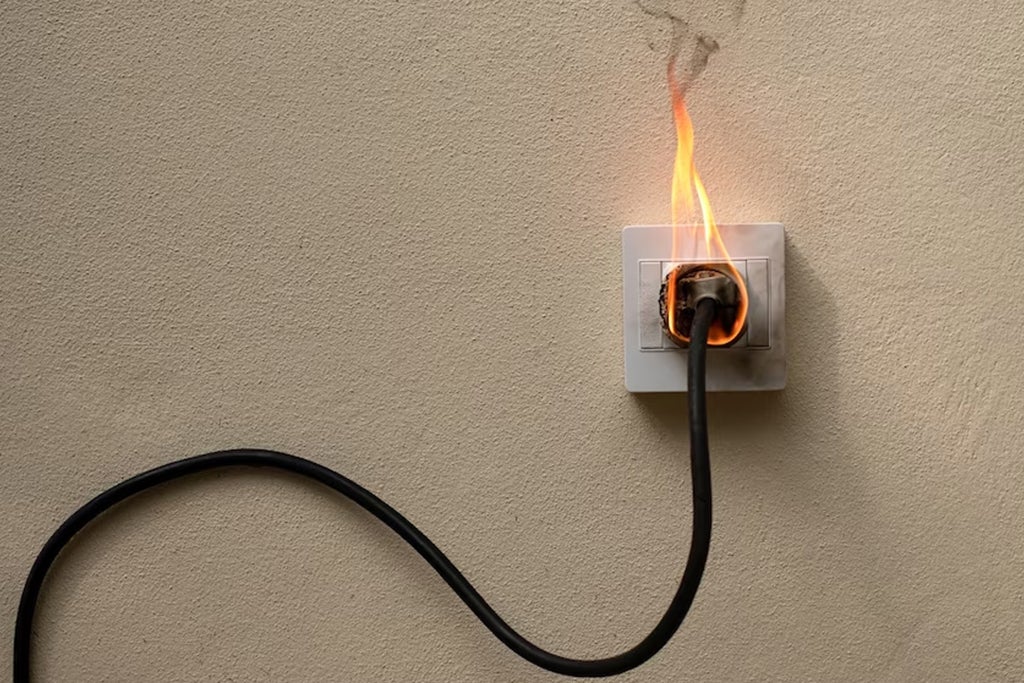What is the Difference between Overloading and Short-Circuiting?
In a world dominated by the use of electricity and electrical devices, electrical safety measures are of paramount importance. While there are many dangers posed by electricity, electricians and engineers often speak about two most common but distinct issues that can arise in electrical circuits: short circuits and overloading. Both issues may cause significant damage to homes, institutions, devices, and even individuals.
So, what is short-circuiting and overloading? Let us look into the difference between short-circuiting and overloading, including their characteristics, causes, and preventive mechanisms so that we may prevent any harm befalling us from either of these causes.
What is Overloading in Electricity?
It is essential to understand that every electrical circuit has a limited and fixed capacity of electricity input. An electrical system is said to be overloaded when the current drawn by the devices connected to the circuit exceeds the pre-fixed capacity of electricity that the device can handle. If the electrical capacity of a device is breached, it can lead to overloading.
Causes of Overloading
Overloading typically occurs when there is an excessive demand for electrical power from the connected devices. Several factors contribute to overloading and some of them are as follows:
- Simultaneous High-Powered Devices: When several power-consuming devices are simultaneously operated on the same circuit, the aggregate current drawn can surpass the circuit’s capacity.
- Faulty Appliances: A faulty appliance can consume more power than it typically should, pressuring the circuit beyond its capacity and causing overloading.
- Inadequate Circuit Design: In some cases, the electrical circuit may not have been designed to handle the current requirements of the connected devices.
- Unexpected Surges: Power surges or voltage spikes can momentarily increase the current demand, pushing the circuit beyond its limits. Power surges are quite common in India and are one of the main reasons for overloading.
Effects of Overloading
- Overheating: The excessive current flowing through the circuit increases the temperature, which can damage conductors and insulation materials, thereby damaging the devices.
- Voltage Drop: Overloading can cause a significant drop in voltage, damaging sensitive devices.
- Tripping of Circuit Breakers: Circuit breakers or fuses may trip in case of an overload and interrupt the circuit, cutting off the power supply to prevent electrical accidents and damage to electrical appliances.
Overloading: Preventive Measures
Electrical overloading is preventable and following the measures given below can effectively help to safeguard against overloading:
- Load Balancing: Distributing devices across different circuits can ensure that a balanced load is maintained, thus preventing overloading.
- Choose Adequate and Safe Wiring: Ensure that the wiring used in all the circuits is appropriate for handling the current load. Make sure that safety standards are maintained for the wirings.
- Employ Circuit Breakers and Fuses: Install circuit breakers or fuses to provide protection to your appliances and devices against overloading.
Read Also: What Protects Circuits from Overload?
Short-Circuiting
A simple answer to the question ‘what is the short circuit?’ is that it is a circuit allowing current to flow through a random path of low resistance. The voltage at the fault point touches zero during the short circuit, permitting a current of very high magnitude to pass through the network.
Causes of Short Circuiting
Short-circuiting can arise from various factors, some of which include:
- Exposed Wires: Worn or damaged insulation on wires may cause open wires to come into contact with each other, creating a direct pathway for the current to flow.
- Faulty Appliances: Internal faults or damaged components in appliances can also lead to short circuits.
- Moisture and Contaminants: Water or other conductive substances on exposed parts of devices or wires can cause unintended electrical connections, causing short-circuiting.
Effects of Short-Circuiting
Short circuits can lead to highly hazardous outcomes. Following are some short-circuit effects that you must be careful of:
- High Current Flow: Low resistance in the short circuit creates a massive current flow through the circuit, overwhelming the components.
- Heat and Fire: The intense current can generate significant heat, leading to the melting of wires and insulation, potentially causing fires.
- Circuit Breaker Tripping: In most cases, the excessive current triggers circuit breakers or fuses to trip, cutting off the power supply.
Short-Circuiting: Preventive Measures
To prevent short circuits, the following precautions are essential:
- Insulation Integrity: Regularly inspect wires and cables to prevent any exposure.
- Use High-Quality Appliances: Invest in reliable appliances with safety features and proper grounding.
- Avoid Moisture and Contaminants: Keep electrical components and wiring dry and protected from moisture and conductive substances.
Difference between Short Circuiting and Overloading at a Glance
Aspect |
Overloading |
Short-Circuiting |
|
The current drawn exceeds the circuit capacity |
Low-resistance connection bypassing the load |
|
Excessive demand from connected devices |
Exposed wires, faulty appliances, moisture |
|
Overheating, voltage Drop, tripping of circuit breakers |
High current flow, heat, fire, circuit breaker tripping |
|
Load balancing, adequate wiring, circuit protection |
Insulation integrity, high-quality appliances, avoiding moisture |
Schneider Electric eShop - The One-Stop Solution for All Your Electrical Woes
Now that you know all about short circuits and overloading and how to prevent them, you must also understand the importance of using robust electrical wires and electrical safety components like fuses and circuit breakers. Schneider Electric is one of the most reliable brands in the market for electrical equipment and wiring. Each of their products runs through several levels of industrial checks and comes with a warranty as Schneider Electric places customer safety above everything else.
Visit Schneider Electric eShop to know all about the products and the services on offer. If you have any queries or would like to speak with customer service, feel free to contact the eShop today!


Comments